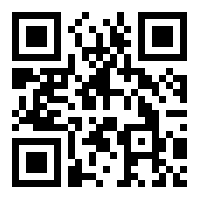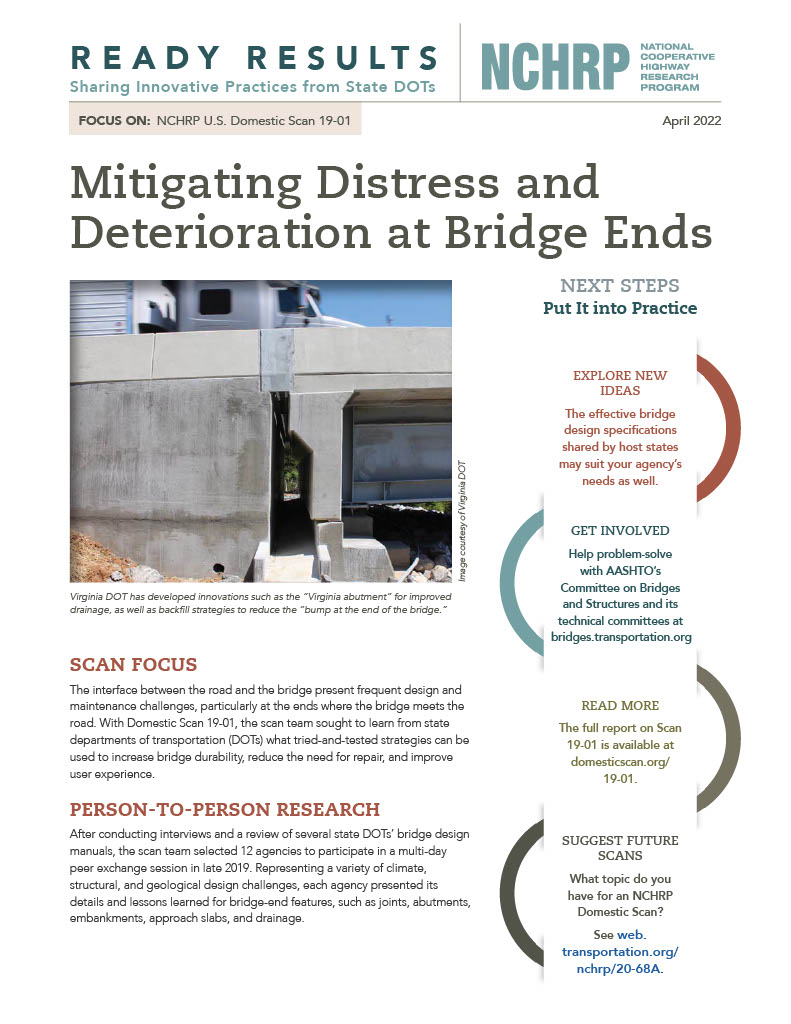
Original Scope: Bridge owners seek to design and construct structures with details and materials that will minimize maintenance and repair costs. One strategy for doing so in design is to minimize the number of joints in the structure. While this approach has proven to improve durability of the structure itself, thermal expansion and contraction of the structure must still be accommodated and loads must be transferred between structural segments when joints are required. Detailing and maintaining joints at bridge ends are notoriously challenging not only because the transition from one structure to another often becomes noticeable to road users as “bump at the end of the bridge,” but also because the displacements and forces at these locations are particularly prone to cause damage to riding surfaces and structural elements. Bridge owners have adopted a wide variety of design details to avoid this damage and have sought to understand the causes of observed distress. This scan will seek out leading design and management practices for minimizing structural distress and surface discontinuity on approaches to jointless bridges.

This scan will meet with agencies having experience in dealing with distresses observed on approaches to jointless bridges. The team will seek to identify tools that can assist in the selection of the appropriate details for use at the ends of bridges. Sharing of these tools nationwide will improve the performance and durability of jointless bridges.
Implementation and Impact
Following the scan workshop in November 2019, the scan team worked at the state, regional, and national levels to advance scan findings. Highlights of these activities include:
At the state level, scan findings were presented to Tennessee DOT meetings and trainings including their Construction School, Directors’ Meeting, Tennessee chapter of ASCE, Design Division Meeting, and Tennessee’s Engineering Conference. Other dissemination activities at the state level included presenting scan findings at the Michigan DOT Bridge Committee Meeting and the Maine DOT Designers’ Meeting.
At the regional and national / international levels, the scan team presented the scan outcomes to AASHTO’s Western and Midwest Bridge Preservation / TSP2 Partnership and the International Bridge Conference.
TRB hosted a webinar based on the outcomes of this scan entitled, Fixing the Bump at the End of the Bridge, where presenters discussed inherent problems, solutions and current practices, and performance monitoring. To view the slides or obtain a copy of the recording, visit the webinar page on the National Academies website.
An article entitled, The “Bump at the End of the Bridge”: Findings of Scan 19-01 summarizing the scan was published in the fall issue of ASPIRE – The Concrete Bridge Magazine.
As a result of this scan, the Tennessee DOT modified their specifications related to backfill limits and requirements, and provided details as to how the agency deals with drainage at the end of a bridge.
Scan chair, Jason DeRuyver, provided perspectives on the scan outcomes on the final day of the scan:
Scan Members
Ready Results Brief

Please login to access additional content for scan members only.
